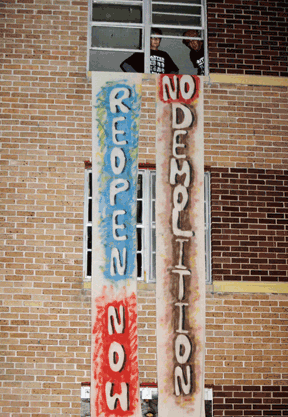It’s now official. At its annual convention in January 2008, the American Dialect Society selected “subprime” as 2007’s Word of the Year. The society explained that its choice signifies the public’s concern for a “deepening mortgage crisis.”
“Everyone is talking about ‘subprime,’” said Wayne Glowka, a spokesman for the group. “It’s affecting all kinds of people in all kinds of places.”
The word is likely to gain even more currency in 2008 and even 2009. Indeed, hardly a day goes by without a news story about the accelerating number of foreclosures, an economic tsunami that is causing chaos in the housing and stock markets, the banking industry, and the global money markets, not to mention the families and neighborhoods upended by the turmoil. To most Americans, “subprime” sounds like a neutral technical banking term. Activists prefer to talk about “predatory” lending, which involves abusive practices, perpetrators, and victims.
Whatever it is called, business leaders, activist groups, and some presidential candidates are calling for our government to do something before the situation worsens. But so far, the Bush administration has simply offered Band-Aids on this deep wound, and it is unlikely that it will do more before George W. Bush heads back to Texas next January.
Make no mistake — it is a crisis. More than 7 million borrowers now hold subprime loans, according to the Center for Responsible Lending. Most of them involved adjustable-rate mortgages (ARMs) that include an initial low-interest rate that quickly balloons to a higher rate. More than 14 percent of subprime loans are now in default, and the pace is accelerating. Perhaps 2 million Americans are likely to face the financial pain and psychological grief of losing their homes in the next few years.
The crescendo of public outcry pushed President Bush last November to announce a plan to freeze interest rates for up to five years for some homeowners who purchased homes with high-risk ARMs that are scheduled to reset at higher rates–in many cases, by hundreds of dollars a month.
For the first few days, virtually all of the reporting in the mainstream press referred to Bush’s plan as a rate freeze that would help homeowners trapped by the mortgage meltdown. The Dec. 6, 2007 headline on the Los Angeles Times, for example, was “Bush mortgage plan would freeze rates.” Many of the initial news stories described the agreement hammered out between the administration and the lending industry.
The problem was that no such plan or agreement actually existed. Bush’s plan, which was developed by Treasury Secretary Henry Paulson, Wall Street’s representative within the Bush administration, was a voluntary set of guidelines that relied on the benevolence and generosity of banks. And it was a polite request to investors who have massively profited from the overly exuberant run-up of housing prices and mortgage-backed securities: Help if you can, but only if you feel like it. There was absolutely no requirement or regulation that would force the banks and the investor community to share the pain or be part of the solution.





This issue really gets hot with me. I used to live in Chicago, before I lost my home, and now, I am living in Wisconsin Dells where home prices are not even that low, yet. They are better, but there’s a trade off between what I live in before and what I live in now.
Greedy bankers and investors take too much, including my house, my friends’ houses, and many other people’s houses. Enough is enough
Johnathan who operates a Wisconsin Dells Hotels consulting service.